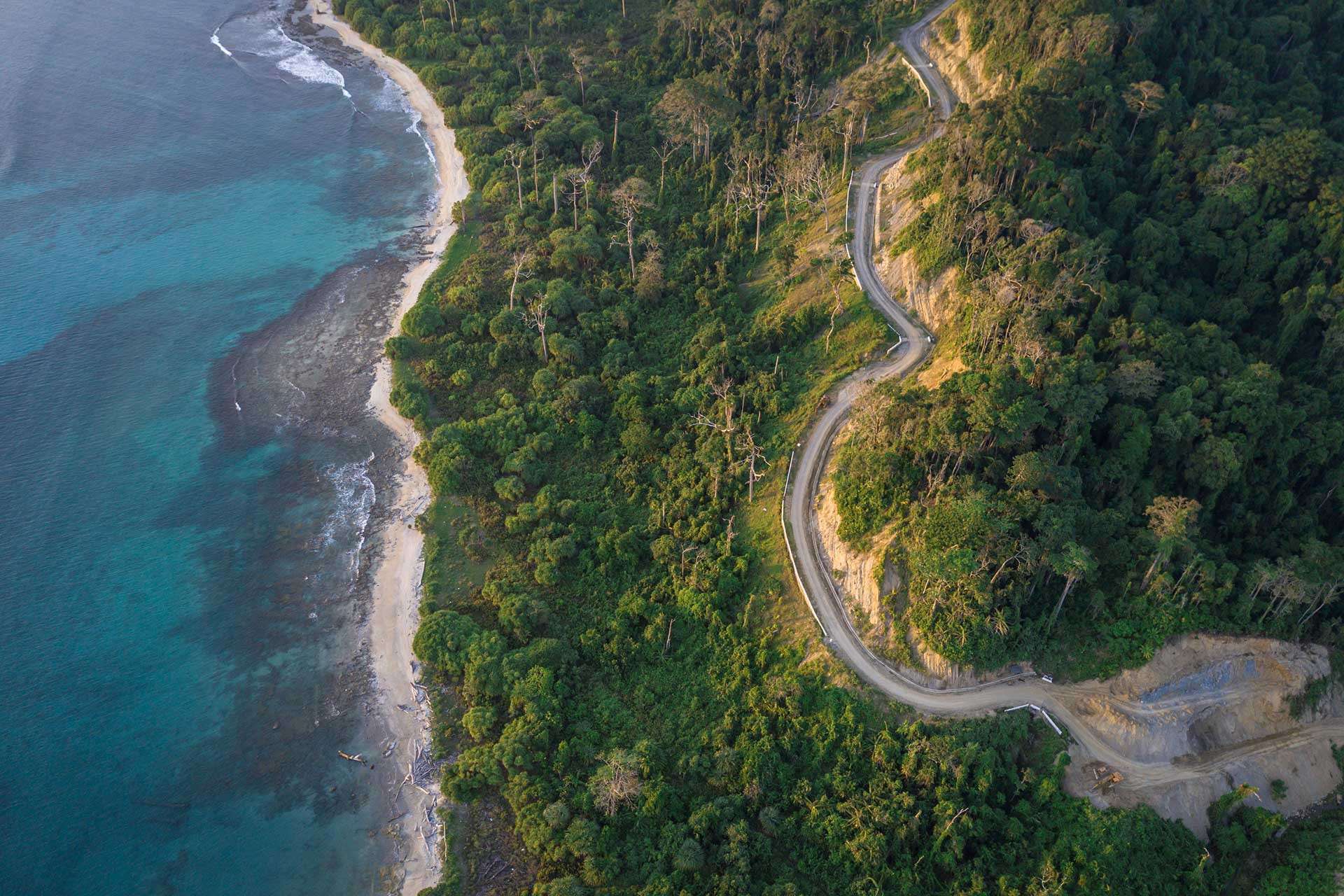For many of us, the Andaman and Nicobar Islands might be a tranquil tourist destination, but its inhabitants certainly do not have a tranquil history. Be it the Great Andamanese, who were pushed to extinction by the British, or the Jarawas and Onges, who continue to suffer due to the misdirected policies of the policymakers, these islands and their inhabitants have been subjected to injustice time and again.
It was in 1979 when despite the Jarawas’ protests, parts of the Jarawa Tribal Reserve were de-notified for timber extraction and the construction of the Andaman Trunk Road that runs right through the reserve. It exposed the Jarawas to disease, addiction and exploitation and resulted in a considerable decline in their population. The Onges sustained themselves on the island of Little Andaman until 1972, when timber extraction, red oil palm plantations and immigrant settlements pushed them out of their land. Now reduced to a population of just 100, they live like tenants on the island they once called home, dependent on ration and menial jobs and restricted to a tiny area of the village of Dugong Creek. The proposed mega-city project on Little Andaman involves de-notifying 31 per cent of the tribal reserve, pushing the already struggling Onges to the brink of extinction.
The same fate is on the horizon for the Shompens as the proposed developmental projects in Great Nicobar Island await approval. Great Nicobar is the only home of the Shompens, a semi-nomadic, hunter-gatherer Mongoloid tribe with a dwindling population. Estimated to have first arrived on the island around 10,000 years ago, the sustenance and socio-cultural practices of the Shompens are strongly linked to the forests and freshwater streams of Great Nicobar. The proposed projects, which include an international trans-shipment port, an airport, a gas power plant and a township, involve the diversion of 121.87sq.km. of forest land and the cutting down of 8.5 lakh trees. The site where the port is planned, Galathea Bay, is one of the regions where a small group of Shompens have made a temporary settlement. To date, the Shompens remain an understudied tribe, and we are still to understand the intricacies of their relationship with the forests of Greater Nicobar. The Nicobarese, another indigenous tribe residing in the coastal areas of Great Nicobar, have previously expressed their dissatisfaction with the new settlements that were built for them closer to town after the 2004 tsunami. They wish to return to their pre-tsunami settlements in Galathea Bay. Representatives of both these tribes have expressed their dissent towards any construction activities on their land in a focused group discussion conducted by anthropologist Dr Vishwajit Pandya, an advisor to the Andaman and Nicobar Administration and the Honorary Director of Andaman and Nicobar Tribal Research Institute (under Ministry of Tribal Affairs, GoI), in 2020.
You may also like to read
The constant pressures of development are essentially changing the way of life for these tribes. Not to forget the settler communities of these islands who yearn for basic services such as regular transportation, robust telecommunication, quality education and medical facilities. Most importantly, they want to be recognised as worthy citizens at par with their mainland counterparts. The alienation and the disregard for the dignity of these local communities by policymakers is nothing short of modern-day colonisation.
At a time when South American nations are increasingly recognising tribal rights and their importance to achieving Sustainable Development Goals (SDGs), India is stifling its indigenous communities by introducing changes to the Forest Conservation Rules that allow the diversion of forest land without the consent of forest-dwellers. These indigenes are the keepers of the islands' forests and rivers, steered by their collective wisdom that has evolved with these islands. Their dwindling voices, deeply rooted in sustainability, are precious lessons for future generations, told in ancient languages that might be lost soon, like we lost Boa Sr., a Great Andamanese woman who was the last speaker of the ‘Bo’ language.
In light of India’s pledge at COP26 to achieve carbon net zero in their bid to fight the climate crisis, the decision to approve such massive infrastructural projects in a biodiversity hotspot is counter-intuitive. It is a sharp blow to an urgent cause whose remedies perhaps lie with the very indigenous communities that we are failing today.
How are we failing them? The Great Nicobar development project is being considered even after the Nicobarese and Shompen tribes have made it clear that they do not want any development on their land. The Environmental Impact Assessment (EIA) report does not even mention them. As part of the public hearing process, prominent anthropologists who have worked on these tribes had put together a letter which pointed out the impact the project would have on the lives of the Shompens and Nicobarese. In fact, as per the terms of reference issued by the government-appointed Expert Appraisal Committee (EAC), the public hearing at Campbell Bay on January 27, 2022, should have had adequate representation of organisations/anthropologists who have worked with Shompens and Nicobarese. However, there was nobody to speak on behalf of the Shompens, and only a single representative, the Tribal Captain, was present to represent the Nicobarese people that live on the island. It is disheartening that the EAC has ignored all this and failed to flag the inadequacies of the EIA procedure.
Therefore, it is up to us now to be the voices of these people who are left clueless as to what the future holds if these projects get approved. I urge you to spread the word about what is happening in Great Nicobar and write letters/emails of disapproval to the concerned authorities, asking them to nullify the current EIA report and conduct a thorough scientific assessment without leaving out the most vulnerable residents of the island.







